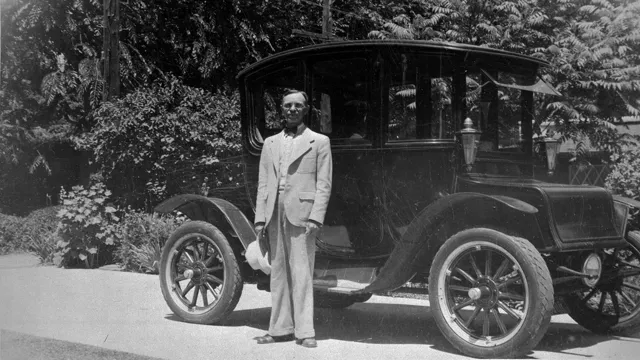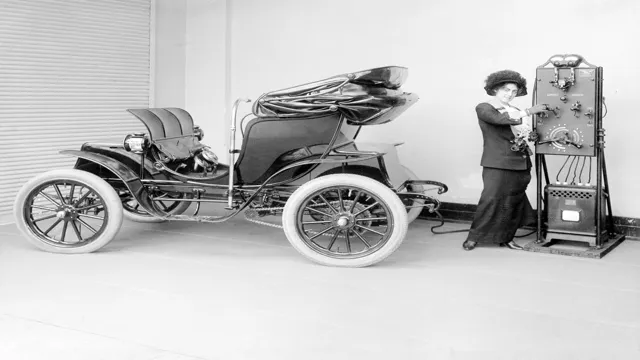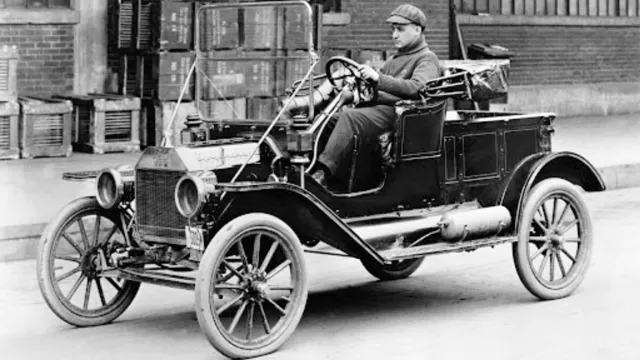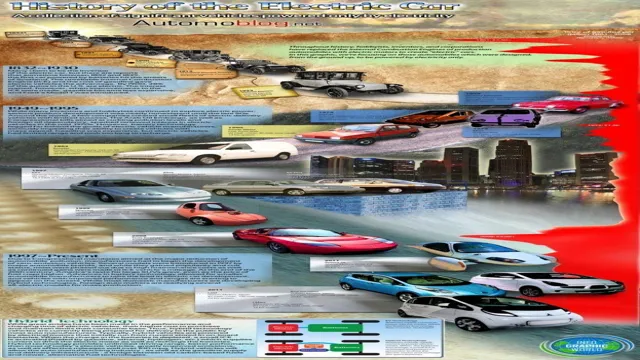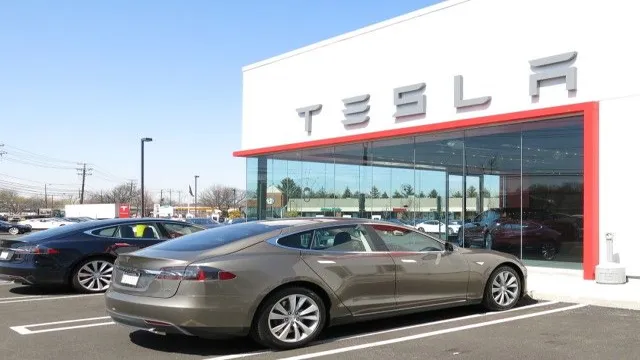Revolutionizing the Roads: Exploring the Fascinating Evolution of Electric Cars
Have you ever wondered about the origins of electric cars? With the rise of sustainable transportation, electric cars have become increasingly popular in recent years. However, many may be unaware of the intriguing history behind their development. In this blog, we will dive into a brief overview of the evolution of electric cars and how they came to be.
From early experiments in the 1800s to the cutting-edge technology of today, the history of electric cars is a fascinating and ever-evolving one. So, buckle up and join us on this journey through time as we explore the past, present and future of electric cars.
Early Electric Cars
The electric car has been around for longer than you might think! In fact, the very first electric vehicle was built in the 1830s, before the gasoline-powered car was even invented. However, it wasn’t until the late 1800s that electric cars started to gain popularity, especially among wealthy city-dwellers who were attracted to their quiet, clean-running motors. By the early 1900s, electric cars were a common sight on city streets, with New York City alone boasting over 1,000 electric taxicabs.
But soon after, gasoline-powered vehicles began to dominate the market, due to advances in technology that made them faster and cheaper. Despite this, electric cars continued to be produced throughout the 20th century, and today they are once again gaining popularity as a cleaner alternative to gasoline-powered vehicles. The brief history of the electric car is a testament to the fact that sometimes, the oldest ideas are the best ones!
1880s – 1910s
During the late 1800s and early 1900s, electric cars were starting to make their presence known on the streets. While gasoline-powered vehicles were the norm, early electric cars offered a quiet and clean alternative for those who didn’t want to deal with the noise and fumes associated with combustion engines. However, early electric cars had their drawbacks – they were expensive, had a limited range, and took a long time to charge.
Plus, roads were often unpaved and lacked the infrastructure needed to support electric cars. Nevertheless, some companies, like the Electric Vehicle Company, saw potential in electric cars and tried to capitalize on their growing popularity. Despite their limitations, early electric cars played a crucial role in the history of electric vehicles, paving the way for the development of more advanced and efficient models that we see today.

Pros and Cons of Early Electric Cars
Electric cars have been around since the late 1800s, but their popularity declined in favor of gas-powered vehicles in the early 20th century. The early electric cars had several advantages, such as being quieter, cleaner, and easier to operate than gasoline cars. They did not emit any pollutants, and their batteries could be recharged at home.
However, early electric cars had some drawbacks. Their range was limited, and they took a long time to recharge. Batteries were also costly to replace, and the electric car market never developed as much infrastructure as gasoline-based cars.
Despite their limitations, early electric cars provided a foundation for modern electric vehicles. They proved that electricity could power vehicles and were instrumental in the development of hybrid and fully electric cars in the 21st century.
The Rise and Fall of Electric Cars
The electric car has had a long and fascinating history. Early electric vehicles were first developed in the 1830s, but it wasn’t until the late 1800s that this technology was considered a practical option for transportation. By the early 20th century, electric cars were becoming increasingly popular, especially in urban areas where gasoline engines were seen as noisy and dirty.
However, the development of the internal combustion engine and the widespread availability of cheap gasoline led to a decline in electric vehicles. In recent years, with concerns over climate change and the need to reduce carbon emissions, electric cars have once again become a viable option. Today’s electric cars are not only more efficient and practical than their early predecessors, but they also offer a range of features and benefits that make them an appealing choice for many drivers.
From the Tesla Roadster to the Nissan Leaf, electric cars are increasingly popular and show no signs of slowing down anytime soon.
1920s – 1990s
Throughout the 20th century, electric cars experienced a rollercoaster ride in popularity. In the 1920s, electric cars were considered the more luxurious option, with famous figures such as Clara Ford and Thomas Edison owning electric vehicles. However, the invention of the Model T by Ford Motor Company and the discovery of Texas oil reserves changed the game.
Gasoline-powered vehicles became cheaper and more accessible, while improvements in the oil industry made petroleum-based fuel affordable. This led to the rapid decline of electric cars, and by the 1930s, they were almost non-existent. It wasn’t until the oil embargo of the 1970s that electric cars saw a resurgence.
With the sudden spike in oil prices and fears of a fuel shortage, electric vehicles were once again seen as a viable alternative. However, this was short-lived, as oil prices stabilized, and consumers found electric cars to be too expensive and impractical. The 1990s saw the attempted revival of electric cars, with the introduction of the General Motors EV1 and the Toyota RAV4 EV.
The maintenance-free and eco-friendly nature of electric cars proved attractive to some consumers, but production was limited, and eventually, both models were discontinued. It wasn’t until the 21st century that electric cars began to make a more profound impact, with the introduction of Tesla’s Model S. The advancements in technology and a growing concern for the environment have made electric cars a more viable option than ever before.
With the push towards sustainability and renewable energy, it is safe to say that electric cars are here to stay.
Oil Crisis and Environmental Concerns
As environmental concerns continue to rise, the search for more sustainable modes of transportation becomes increasingly important. Electric cars have been touted as a possible solution, but their rise and fall have been plagued by challenges. Initially, when the oil crisis was at its peak, electric cars were a popular choice among consumers.
However, as the crisis subsided, interest dwindled, and with it, investment in this technology. Additionally, electric cars faced problems such as limited range, high prices, and a lack of charging infrastructure. But there is hope for their resurgence in popularity.
With advancements in technology, electric cars can now travel further on a single charge, have come down in price, and more charging stations are being built. As environmental concerns grow and oil reserves continue to dwindle, it’s only a matter of time before electric cars become the norm on our roads.
Impact on the Auto Industry
The impact of electric cars on the auto industry has been a rollercoaster ride in recent years. In the early 2010s, the future of electric vehicles looked bright, with companies like Tesla leading the charge. However, the initial hype was followed by a bit of a slump, with sales not meeting expectations and skepticism about charging infrastructure.
But in the past couple of years, we have seen a resurgence in interest in electric cars, with more and more automakers offering EV options and governments committing to phasing out gas-powered vehicles. The keyword “electric cars” has become ubiquitous in industry conversations, with some predicting that they’ll soon dominate the roads. While the rise and fall of electric cars has been anything but predictable, their place in the auto industry seems more secure than ever.
The Resurgence of Electric Cars
Electric cars have come a long way since their inception in the early 19th century. It was in 1832 when Robert Anderson built the first electric car prototype, leading the way for other inventors to explore the technology’s possibilities. However, it wasn’t until the late 1990s that electric cars started gaining popularity with the introduction of the General Motors EV1 and the Toyota Prius.
At the time, electric cars were expensive, had limited range, and were seen as inconvenient due to the need for frequent charging. However, in recent years, electric cars have experienced a significant resurgence due to technological advancements and environmental concerns. As a result, major automakers, such as Tesla, Nissan, and Chevrolet, have released affordable electric cars with longer ranges, making them more accessible to consumers.
Today, electric cars are considered a viable alternative to traditional gasoline-powered vehicles, offering lower emissions, reduced operating costs, and a smoother, quieter driving experience. The electric car has come a long way, and it’s exciting to see what the future holds for this innovative technology.
2000s – present
In the 2000s, electric cars made a tremendous comeback with a renewed focus on sustainability and reducing carbon emissions. Automakers began producing electric models that offered longer driving ranges and faster charging times, making them a viable alternative to traditional gasoline vehicles. Tesla led the charge in creating sleek and stylish electric cars that appealed to a wider audience, while other manufacturers like Nissan and Chevrolet introduced more affordable electric vehicles to the market.
Thanks to advancements in battery technology and government incentives, the demand for electric cars has continued to grow steadily. In fact, the number of electric vehicles on the road worldwide surpassed 7 million in 201 As we move towards a more environmentally conscious future, it’s likely that electric cars will become increasingly popular and accessible to the masses, driving us towards a sustainable transportation system.
Advancements in Battery Technology
The advancements in battery technology have led to a resurgence in the popularity of electric cars. With the development of lithium-ion batteries, electric cars can now travel further distances while maintaining their efficiency. This technology has allowed electric cars to compete with traditional gas-powered vehicles, making them a viable option for environmentally conscious drivers.
Additionally, the price of lithium-ion batteries has significantly decreased, making electric cars more affordable overall. As a result, companies such as Tesla have been able to produce high-performance electric cars that are both luxurious and eco-friendly. The future looks bright for electric cars, as researchers continue to make strides in battery technology, which will only enhance their capabilities.
The Future of Electric Cars
The electric car has come a long way since it was first introduced in the early 1800s. While the first electric car wasn’t practical for everyday use, it paved the way for electric cars that were more efficient and practical. In the 21st century, there has been a surge in the popularity of electric cars due to concerns about climate change and the rising cost of fuel.
As people become more conscious about the environment they live in, the electric car industry is expected to grow even more. The market is becoming more competitive, with more companies introducing their own electric cars. As manufacturers focus on improving battery technology and expanding the range of electric cars, there’s no doubt that the future of the electric car is bright.
With advancements in technology, electric cars are becoming more affordable and practical, making them accessible to more people than ever before.
Conclusion
In conclusion, the electric car has had a rollercoaster ride through history. From its beginnings in the 1830s to its downfall in the early 1900s, it remained a forgotten technology until the 21st century, when its popularity surged again. With advancements in battery technology and an increasing demand for sustainable transportation, the electric car is once again taking the world by storm.
It just goes to show that sometimes, history has a funny way of repeating itself. As Thomas Edison once said, “I have not failed. I’ve just found 10,000 ways that won’t work.
” The electric car may have taken its time to get to where it is now, but we’re glad it finally found a way that works. And who knows, with all the developments in technology, maybe the future holds even more surprises for this timeless invention.”
FAQs
When was the first electric car invented?
The first electric car was invented in the 1830s.
What caused the decline of electric cars in the early 20th century?
The discovery of oil in Texas in 1901 led to the abundance of cheap gasoline, which caused the decline of electric cars.
When did electric cars start gaining popularity again?
Electric cars started gaining popularity again in the 21st century due to concerns over climate change and the development of more efficient battery technology.
What are the advantages of using electric cars?
Electric cars have zero emissions, are more energy efficient than gasoline cars, and have lower maintenance costs due to fewer moving parts.
